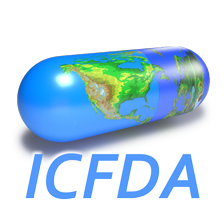Sarafem, what a nice sounding name for such a deadly drug. How many patients
will know that they are really getting Prozac with a different name? Why is a
name change necessary? If it said Prozac on the label, would the patient take
it? We will not know with the FDA allowing Lilly to change Prozac’s name when
being prescribed for this disorder. Giving these SSRIs different brand names
does nothing to change the dangers of these drugs, but much to confuse the
patient about the dangers and just what drug they are really getting. Talk
about “failure to warn”!
For some time now doctors have given SSRI antidepressants for PMS. They have
encouraged patients to take the drugs in the most dangerous manner I am aware
of – taking them for a week or so and dropping “cold turkey,” then doing the
same the following month! Well, if we thought we saw rage before with PMS,
just wait! Now we can see SSRI withdrawal rage every month rather than the
PMS. At least we will see a change in the time it occurs and the intensity,
right? And now we can, with the FDA’s approval, cure PMDD with drug-induced
psychosis, suicide or murder/suicide. What a novel idea!
Sorry about the sarcasm. I guess I have seen too many people die or have
their lives destroyed as a result of using serotonergic drugs. Just how much
longer can these terrible heart rending tragedies be the “acceptable” risk in
anothers’ feeling better due to a drug-induced hase for things like PMS or
shyness? Please someone tell me where the “acceptable” risk is in using these
powerful and very dangerous drugs for such minor health problems when there
are so many simple and harmless natural solutions like Omega 3 oils? It
couldn’t be because those harmless solutions don’t make anywhere near the $30
– $40 million per day that these drugs bring in, could it? It is clear whose
interest the FDA has in mind with this approval.
Ann Blake-Tracy
_________________
FDA APPROVES FLUOXETINE TO TREAT PREMENSTRUAL DYSPHORIC DISORDER
FDA has approved fluoxetine (Sarafem) as the first drug treatment for
Premenstrual Dysphoric Disorder(PMDD), a disorder that causes mood changes
and physical symptoms such as bloating and breast tenderness in women.
Fluoxetine was approved as Prozac in December l987 for treating depression,
and has also been approved for treating obsessive compulsive disorder and
bulimia. The following may be used to respond to questions.
On November 3, 1999, FDA’s Psychopharmacologic Advisory Committee unanimously
recommended approval for fluoxetine to treat women with PMDD. The committee
concluded that fluoxetine was effective for the condition and that PMDD has
well defined, accepted diagnostic criteria. The committee also advised that
the drug should be used only to treat women whose symptoms are severe enough
to interfere with functioning at work or school, or with social activities
and relationships.
According to the American Psychiatric Association Diagnostic and Statistical
Manual (DSM-IV), a diagnosis of PMDD requires that patients experience at
least five of the symptoms that characterize PMDD. PMDD has both affective
(mood) and physical symptoms, and is characterized by depressed mood,
anxiety, tension, affective lability (a tendency to alternate between
cheerful and somber moods), and persistent anger or irritability. Other
features include decreased interest in activities, difficulty concentrating,
lack of energy, change in appetite, headache, joint and muscle pain. The mood
symptoms often cause disturbances in social relationships. Physical symptoms
include weight gain, bloating, and breast tenderness. To support a diagnosis
of PMDD, the symptoms must occur regularly in the luteal phase of a woman’s
cycle, and disappear after onset of menstruation. (The luteal phase
corresponds to the period between ovulation and onset of menstruation.)
Fluoxetine’s effectiveness for the treatment of PMDD was established in two
double-blind placebo-controlled trials. In the first study, 320 patients were
given fluoxetine continuously throughout the menstrual cycle. This study
showed that the drug was significantly more effective than placebo by
measurements of changes in mood and physical symptoms of PMDD. In a second
study, 19 patients were treated with fluoxetine and placebo continuously
throughout the menstrual cycle for a period of three months each. In this
study, fluoxetine was significantly more effective than placebo on a scale
measuring changes in mood, physical and social impairment symptoms.
Sarafem will be marketed by Eli Lilly, of Indianapolis, Ind., with a patient
information brochure and physician labeling specific for the drug’s use. The
drug was not studied in women who were taking oral contraceptives. Common
side effects were similar to those experienced by other fluoxetine users and
included nausea, tiredness, nervousness, dizziness and difficulty
concentrating.



